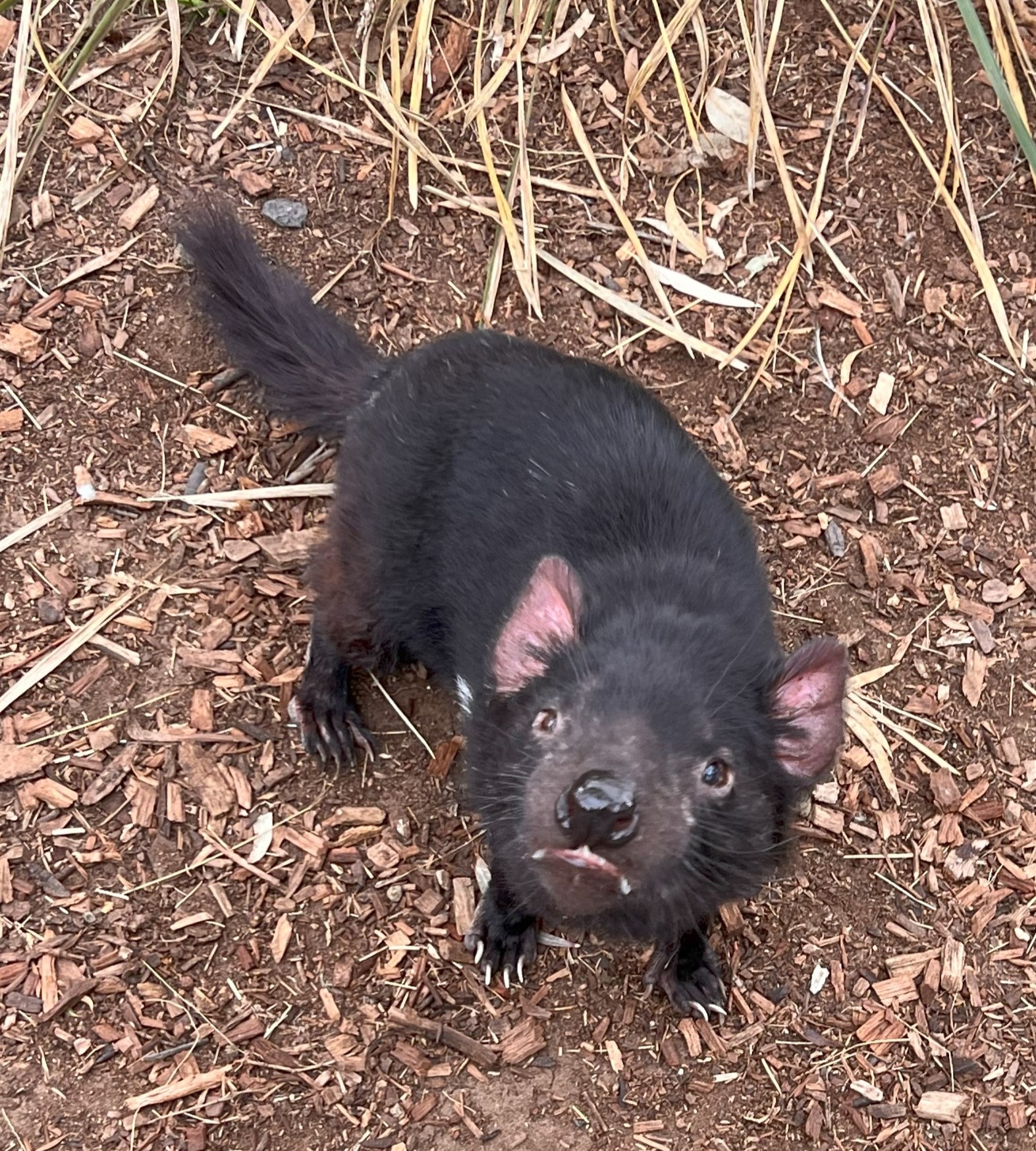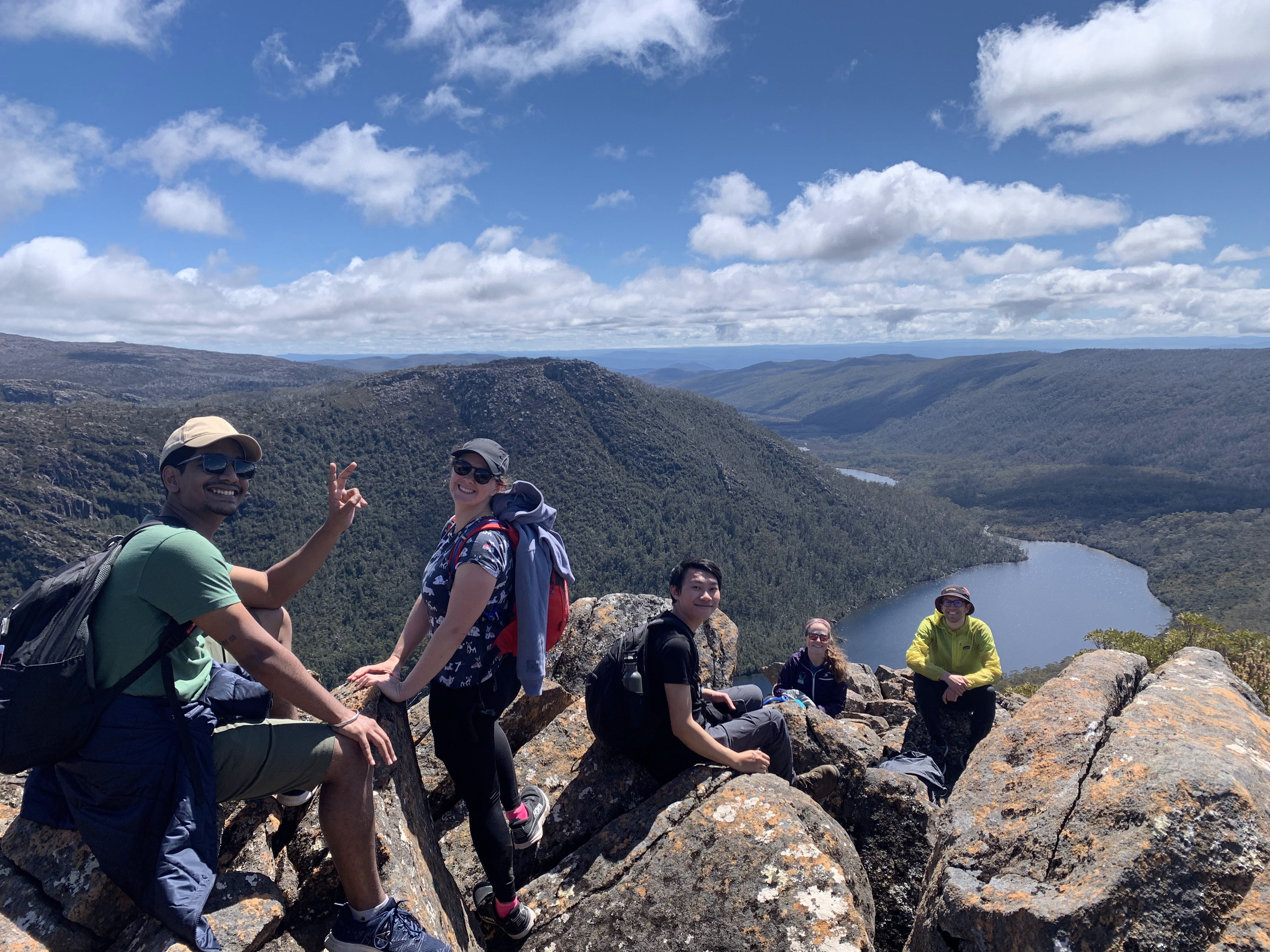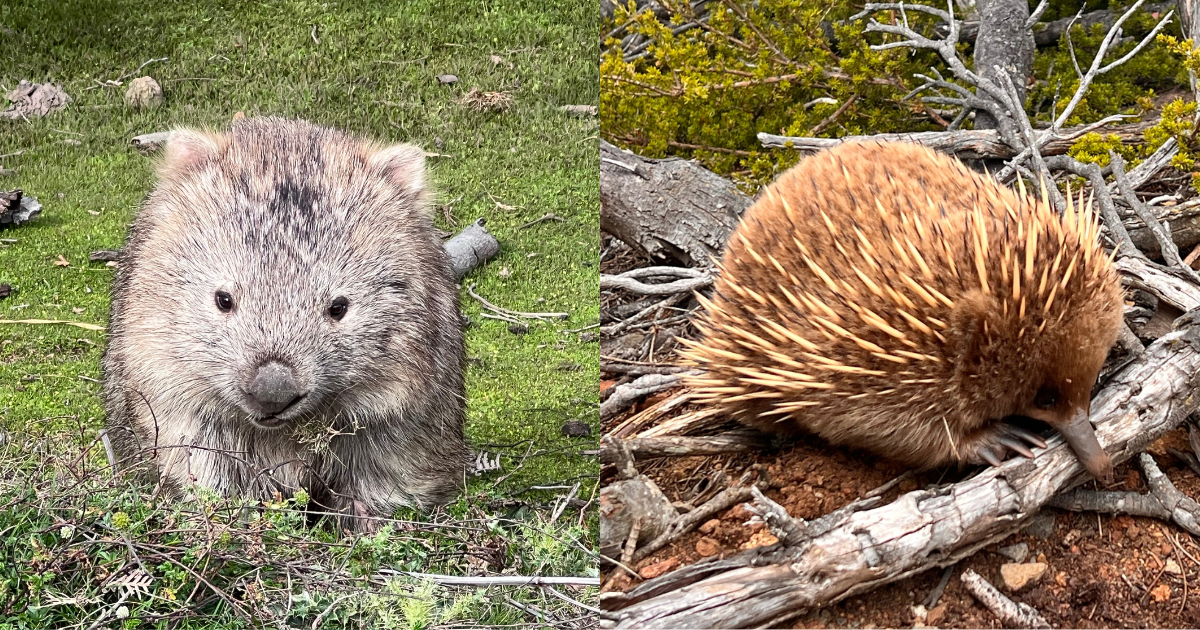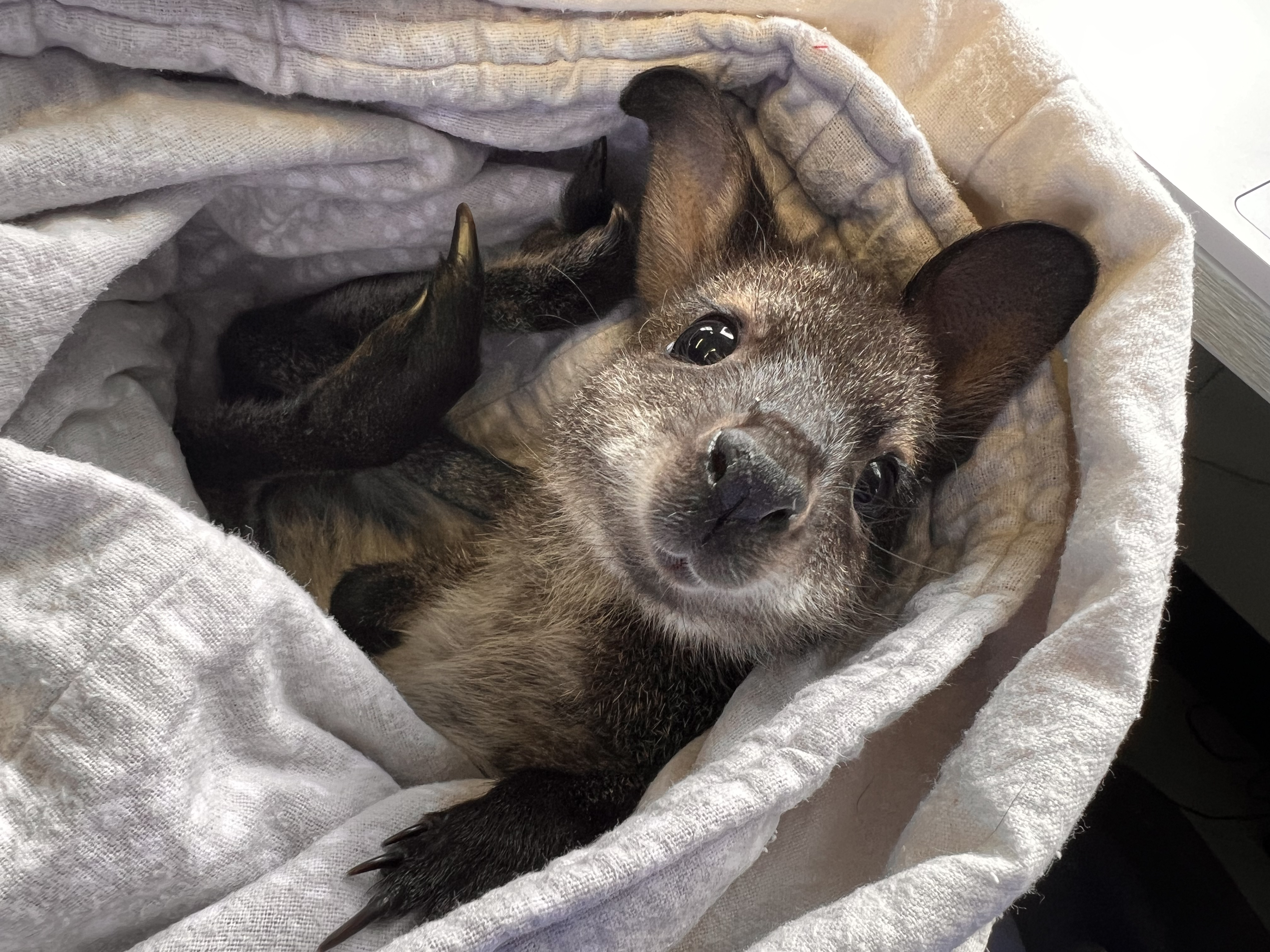Tackling Transmissible Cancers: Innovations in Tasmanian Devil Conservation
By Kristina Ceres, DVM ’24, PhD ’22
Journey to Tasmania
In October 2023, I had the opportunity to travel to Tasmania, the island state of Australia, to learn more about one of its most iconic species, the Tasmanian devil. Tasmanian devils are the world’s largest carnivorous marsupials, and they play a key ecological role as scavengers and in suppressing populations of invasive species. In the 1980’s the Tasmanian devil was not considered to be a species of conservation concern. However, in the last 40 years, a very rare type of infectious disease, devil facial tumor disease, has caused drastic population declines, endangering the species with extinction.
Origins and spread of two transmissible cancers
Devil facial tumor disease is caused by transmissible cancers. Transmissible cancers are unusual types of infectious diseases in that no microbes such as viruses or bacteria are involved in transmission. Instead, contagious cancer cells themselves are transmitted through biting and cause oral and facial tumors that are almost invariably fatal.
Transmissible cancers are incredibly rare in mammals. Only three known transmissible cancers of mammals exist, and incredibly two of them evolved independently in Tasmanian devils in my lifetime. The first cancer, devil facial tumor 1 (DFT1) was discovered in 1996 and quickly spread across Tasmania, affecting 90% of the species range. DFT1 has killed up to 80% of Tasmanian devils since it emerged. Due to this rapid rate of decline, the Tasmanian devil has been listed as endangered since 2008.
The second cancer, devil facial tumor 2 (DFT2) was identified more recently in 2014 and has since remained localized to a small region in southeastern Tasmania. There are concerns that DFT2 will cause further population declines if it spreads across the state, similar to DFT1.
Basic science meets wildlife conservation
In mammals, allografts such as organ transplants are usually recognized and rejected by the host immune system. As transmissible cancer cells, DFT1 and DFT2 must avoid detection by the host immune system in order to invade new hosts. DFT1 evades immune recognition by downregulating expression of major histocompatibility complex class 1 (MHC-1) molecules, key molecules used in recognizing allografts. Without expressing MHC-1, DFT1 cells appear invisible to the host immune system, allowing them to replicate and grow into devastating tumors. Under certain circumstances, however, DFT1 cells can express MHC-1, and when this occurs tumors have been found to regress. Building on this finding, researchers in the Wild Immunology group at the University of Tasmania Menzies Institute for Research led by Dr. Andy Flies are developing a vaccine that induces MHC-1 expression, making tumor cells more visible to the immune system.
While in Tasmania, I had the opportunity to work with the Wild Immunology group and learned more not only about vaccine development, but also about the group’s other complementary projects including the development of rapid diagnostic tests for DFT1 and DFT2, investigations of different oral baits to deliver vaccines in the wild, the development of tools to better understand Tasmanian devil immunology, and the creation of a remote monitoring system to evaluate Tasmanian devil health in the field. The Wild Immunology team, which consists of a combination of veterinary scientists, immunologists, and data scientists, introduced me to their fascinating work, and to some of the beautiful wild places in Tasmania such as Mount Field National Park.
In addition to my time at Menzies, I also had the opportunity to shadow the veterinary staff at the wildlife hospital at Bonorong Wildlife Sanctuary. The Bonorong wildlife hospital treats and rehabilitates native injured wildlife species from across Tasmania, seeing on average 120 patients per week.
I am grateful to the Cornell K. Lisa Yang Center for Wildlife Health for generously supporting my trip to Tasmania through their Student Support Fund. My time there left a profound impact on me. Immersed in a welcoming and enriching scientific community, I witnessed first-hand the rigorous pursuit of immunological advancements akin to the groundbreaking biotechnologies seen in the AstraZeneca and Johnson & Johnson COVID vaccines, with the profound goal of developing a vaccine that may safeguard the Tasmanian devil from the looming threat of extinction. Moreover, I had the opportunity to explore Tasmanian’s breathtaking wilderness and encounter many of its incredible wildlife species.
Kristina Ceres is a 2024 DVM-PhD graduate from the Cornell University College of Veterinary Medicine. She earned her PhD in epidemiology and pathogen evolution, and she is interested in wildlife population health. She intends to pursue a career in conservation genetics and wildlife health research.
Photos provided by Dr. Kristina Ceres.
Please consider giving to the Cornell Yang Center for Wildlife Health Student Support Fund to help provide more hands-on experiential learning opportunities for students passionate about wildlife health and conservation.





